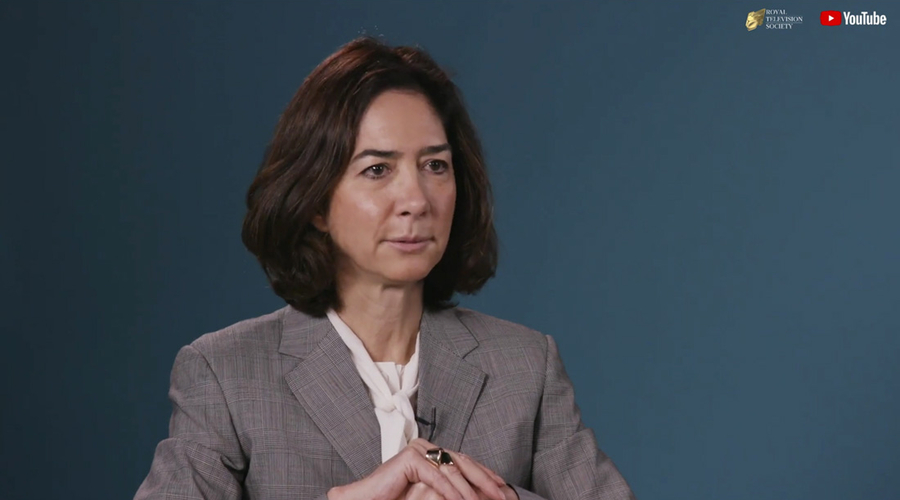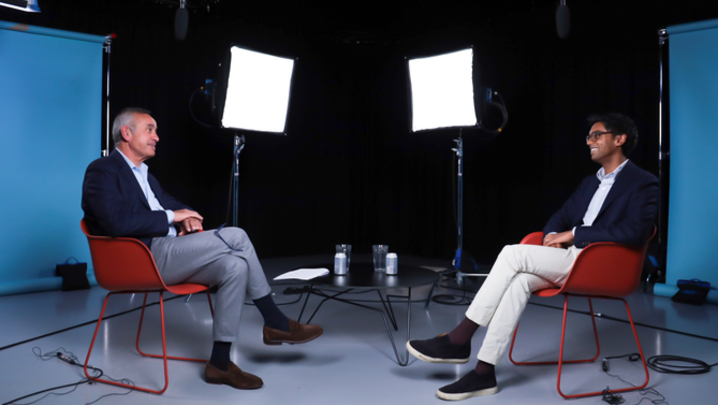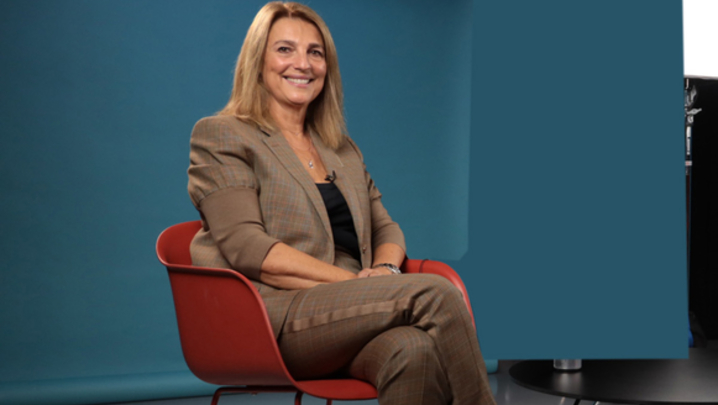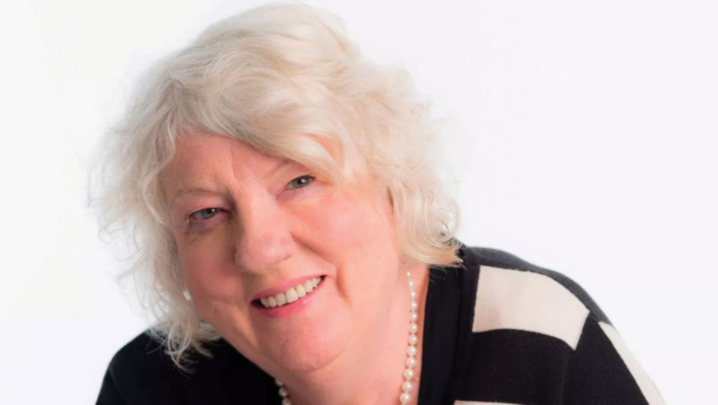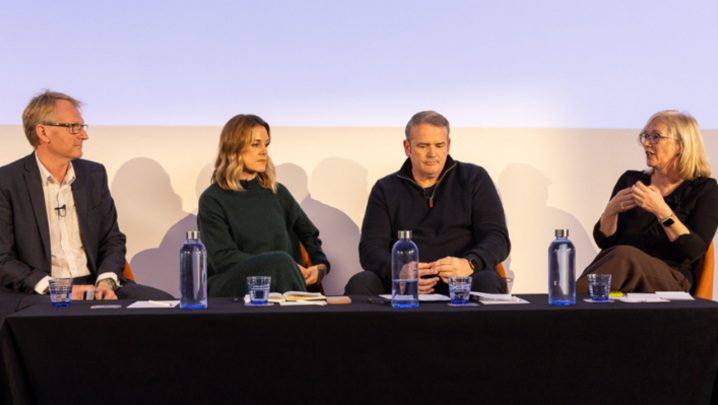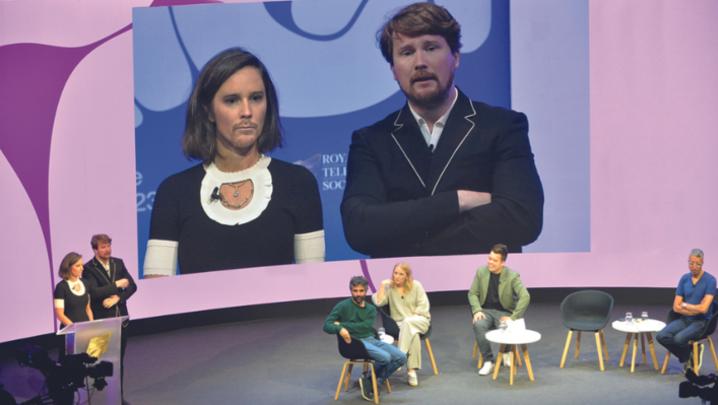YouTube’s Cécile Frot-Coutaz describes her journey from TV creative to Europe’s foremost player in digital video
Cécile Frot-Coutaz, head of YouTube, EMEA, has urged broadcasters to form more partnerships with the Google-owned platform, which this summer was revealed to be the third most-watched video service in the UK after the BBC and ITV.
Speaking at the RTS Digital Convention, the former Fremantle CEO emphasised that her company had plenty of evidence to show that legacy platforms seeking young audiences would be smart to cement their ties with the video-sharing platform.
She recalled the challenge of relaunching American Idol in the US on ABC in 2017, when she was at Fremantle, which also makes The X Factor. “We had a 360-degree social media strategy, which led to more young people than ever watching the show,” Frot-Coutaz said.
Her interviewer, Jane Turton, CEO of All3Media, posed the question: should ITV and the BBC embrace the platform and work with YouTube? Most definitely, Frot-Coutaz replied, referencing data that showed an unnamed French broadcaster boosting its audience by around 6 million 18- to 24-year-olds thanks to its presence on YouTube. “These young people don’t watch the service’s TV channel,” she explained. “Those numbers are not about to change.”
She added: “There are markets, not the mature ones, where YouTube is used very much as a VoD service for long-form content.
“I’d encourage broadcasters to experiment by launching a series on YouTube and examine the data so they understand what works.”
Sixty per cent of the audience that watched the Eifel Grand Prix in October, when it was streamed live by YouTube in seven European countries, were young people, she said, adding: “My message to broadcasters is, ‘See what works for you on YouTube. Try it out.’”
Over this fascinating session, Frot-Coutaz, who left Fremantle in 2018 to join the Google-owned platform, made it clear how, after leading a TV production company, being employed by YouTube came as something of a culture shock. “In a vast number of ways, it’s very different to working in TV.… YouTube speaks a different language.… The first thing that hits you are the acronyms.…
“What strikes most people when they come in from outside is how collaborative the culture is. Collaboration is almost hardwired into the structure, but also the tools.… For any given initiative, you can’t make any progress if you haven’t aligned cross-functionality.”
Within any Google-owned company, teams containing experts from different disciplines collaborate. Frot-Coutaz said this approach delivered a high level of creativity because it was essential to listen to colleagues’ viewpoints: “It’s quite tough when you come in from outside, because those structures are not necessarily visible immediately. It takes a little while to understand how to operate in what is quite a fluid and ambiguous environment.”
She said it took her 18 months to feel she was no longer a newbie, partly because of the company’s size and complexity: “You can become a little impatient. ‘Do we really need to have another meeting with 10 people to discuss this?’ It can take longer to get to a decision, but I believe you get to a better outcome.”
On the other hand, during a crisis, YouTube can move quickly, she explained. And, unlike TV, where it’s not unusual for shows to launch before they are fully completed in order to gauge how audiences will respond to them, YouTube operates in “a culture of constant iteration” driven by data.
Moreover, the workforce is significantly younger than in TV and a lot of transparency is required from YouTube’s leaders.
“There is also a different lens on what ‘good’ looks like,” Frot-Coutaz added. “In traditional media, there is some growth, but they are mature businesses. However, these are start-ups.… The bar is very different.”
She said the best way to describe YouTube to those unfamiliar with the platform was as “a giant video library”, searchable from any digital device.
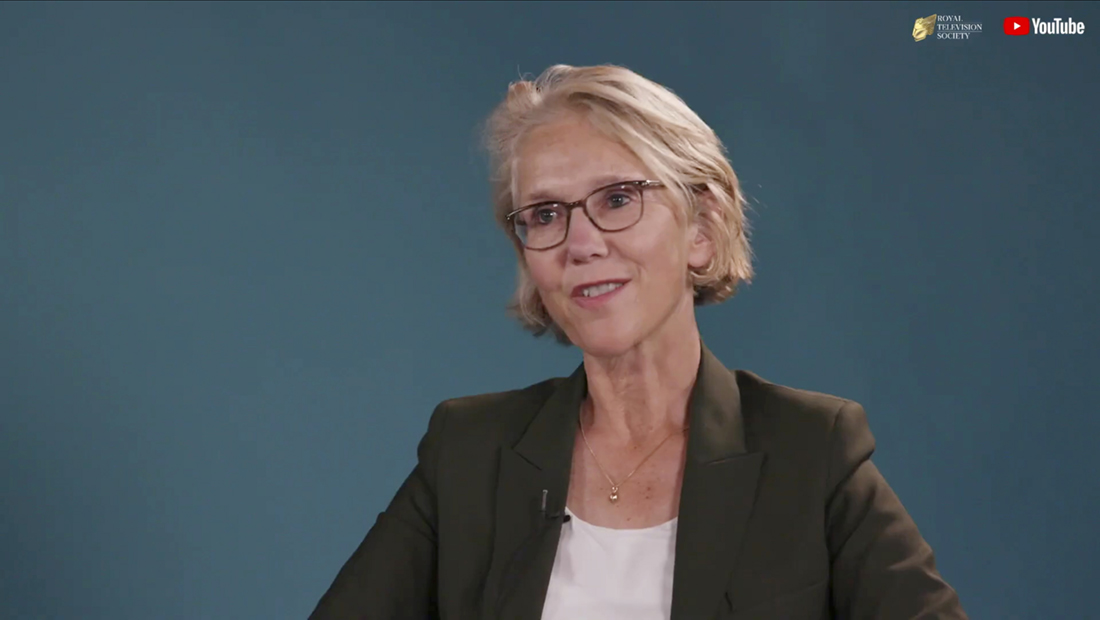
“If you use it a lot, it’s going to get to know what you like,” said Frot-Coutaz. “If you watch X, the algorithm will offer more of X but it might also offer Y because somebody who watched Y also watched X.”
It is estimated that 500 hours of video are uploaded to YouTube every minute and that we watch over 1 billion hours of YouTube videos a day, more than Netflix and Facebook combined.
Was YouTube a competitor to TV? “It competes with anything that competes for your attention… newspapers, gaming platforms, TV and radio.
“It’s both an education and entertainment platform. But, in lots of ways, it’s very different to TV because it’s a hosting platform. At its core, YouTube is there to enable the connection between the content creator in the widest sense of the word and an audience. And to make that connection as rich and interactive as possible.”
She praised the platform’s young content creators, such as the UK’s beauty influencer Patricia Bright, for “the richness of their creativity”, emphasising the high levels of engagement between them and their followers.
“They are digital-first creators, and they might do something for TV, but it is not their goal. Broadcasters still try to be a big tent whereas YouTube creators are a bit niche,” noted Frot-Coutaz.
Seventy per cent of YouTube views come from mobile devices. However, the platform was evolving as, increasingly, YouTube was being watched on big screens. “For us, the implications of that are interesting,” she said.
What kind of material was being seen on TV sets – content produced by PSBs or all sorts of things? “It’s a combination.… During lockdown, we’re finding there’s a lot of family viewing.”
Regarding news and information, not surprisingly, health had come to the fore – fitness and well-being videos in addition to films providing information on serious illnesses such as cancer and, inevitably, Covid-19.
“We want to ensure that people find authoritative information on YouTube, whether it’s working with the NHS in the UK or government health authorities overseas,” she said. “There’s an opportunity to link influencers with these authorities and to get health messages to a younger group of users.
“During Covid, we’ve played a big role in relaying the messages of governments using creators, including musicians and artists.”
Few would deny the benefits that YouTube has brought users since the platform launched 15 years ago but concerns remain that the website is still not vigilant enough in removing harmful material.
“Safety is one of our biggest priorities,” stressed Frot-Coutaz. “It’s where we’ve probably invested most heavily, in machine learning [to detect potentially harmful videos] and in people.
“You invest a lot [in safety] but it’s never going to be perfect. It’s super important but, if you quantify it, it’s actually a small problem. The content that you would describe as bad is less than a fraction of 1% of what’s on YouTube.”
Decisions over which videos to remove were not always straightforward. The AI that analyses the material cannot, for example, distinguish between a piece of neo-Nazi propaganda and an educational film about the Holocaust. “That’s why we need people to review potentially harmful material,” she said. “Also, there is misinformation that is completely harmless and misinformation that is harmful.
“It’s complicated further by different cultural attitudes in different countries. To the extent that it is possible, a global approach is essential because, if it is too fragmented, you risk making mistakes.
“The more bespoke the content and the more nuanced it is, the harder it is even for the reviewers to do their job at scale.… It’s important not to make arbitrary decisions.”
Report by Steve Clarke. Cécile Frot-Coutaz, Head of YouTube, EMEA, was in conversation with Jane Turton, CEO of All3Media, on 18 November, as part of the RTS Digital Convention 2020, sponsored by YouTube.

